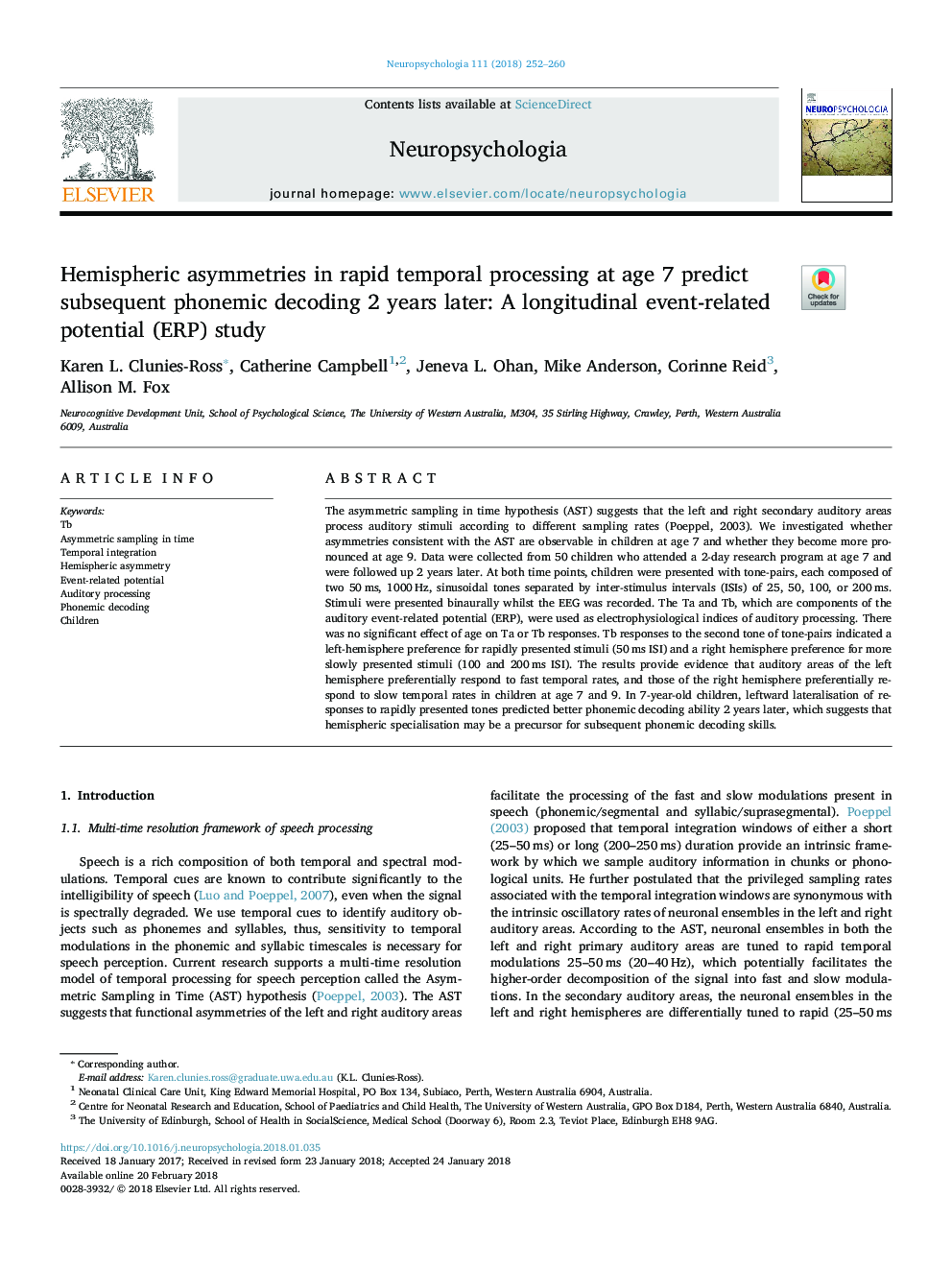| Article ID | Journal | Published Year | Pages | File Type |
|---|---|---|---|---|
| 7317987 | Neuropsychologia | 2018 | 9 Pages |
Abstract
The asymmetric sampling in time hypothesis (AST) suggests that the left and right secondary auditory areas process auditory stimuli according to different sampling rates (Poeppel, 2003). We investigated whether asymmetries consistent with the AST are observable in children at age 7 and whether they become more pronounced at age 9. Data were collected from 50 children who attended a 2-day research program at age 7 and were followed up 2 years later. At both time points, children were presented with tone-pairs, each composed of two 50â¯ms, 1000â¯Hz, sinusoidal tones separated by inter-stimulus intervals (ISIs) of 25, 50, 100, or 200â¯ms. Stimuli were presented binaurally whilst the EEG was recorded. The Ta and Tb, which are components of the auditory event-related potential (ERP), were used as electrophysiological indices of auditory processing. There was no significant effect of age on Ta or Tb responses. Tb responses to the second tone of tone-pairs indicated a left-hemisphere preference for rapidly presented stimuli (50â¯ms ISI) and a right hemisphere preference for more slowly presented stimuli (100 and 200â¯ms ISI). The results provide evidence that auditory areas of the left hemisphere preferentially respond to fast temporal rates, and those of the right hemisphere preferentially respond to slow temporal rates in children at age 7 and 9. In 7-year-old children, leftward lateralisation of responses to rapidly presented tones predicted better phonemic decoding ability 2 years later, which suggests that hemispheric specialisation may be a precursor for subsequent phonemic decoding skills.
Keywords
Related Topics
Life Sciences
Neuroscience
Behavioral Neuroscience
Authors
Karen L. Clunies-Ross, Catherine Campbell, Jeneva L. Ohan, Mike Anderson, Corinne Reid, Allison M. Fox,
